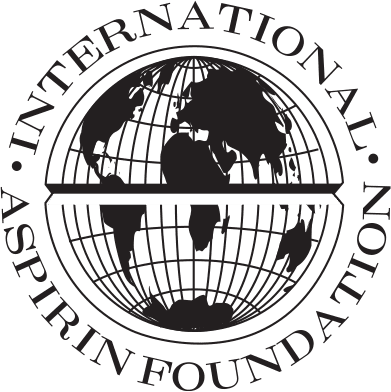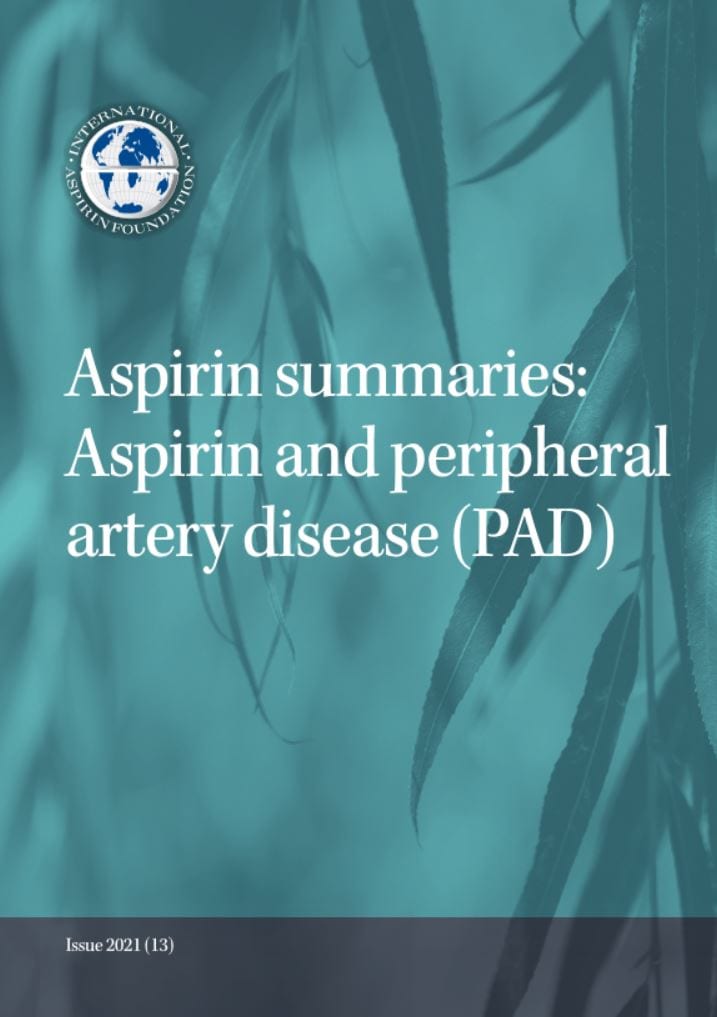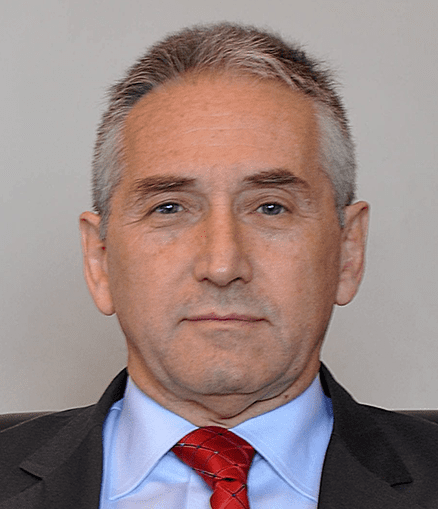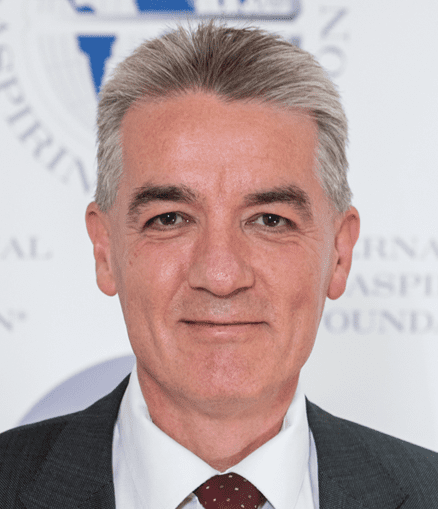Aspirin summaries: Aspirin and peripheral artery disease (PAD)
Peripheral artery disease (PAD), a form of cardiovascular disease (CVD) is caused by fatty deposits (atheroma) building up in the arteries and restricting the blood flow to the legs1. Often people may have no symptoms, but some develop leg pain when they are walking which is relived by rest1. This is called intermittent claudication and can range in severity. Other symptoms include, hair loss on legs and feet, numbness or weakness in the limbs, slow growing or brittle toenails, ulcers, change in skin colour or texture on the legs e.g. pale or blue and shiny skin, muscle wasting in the legs and erectile dysfunction1. A serious complication, critical limb ischaemia, can develop from PAD if the circulation to the legs is severely impaired1. Having PAD is a sign that other forms of cardiovascular disease may exist within the body and thus means people with PAD are more likely to experience a cardiovascular event such as coronary heart disease (CHD), stroke, myocardial infarction (MI) or angina1.
Reduced exercise and quality of life can result from symptoms of PAD as well as tissue loss from its complications2. Treatment includes lifestyle changes such as regular exercise, smoking cessation, healthy diet, healthy weight and reducing alcohol1. Medication to help manage the underlying causes of PAD and to reduce overall CVD risk includes statins, drugs for high blood pressure, medicines to thin the blood such as low-dose aspirin, clopidogrel and rivaroxaban1. Naftidrofuryl oxalate is sometimes used to treat leg pain that is triggered by walking1. Surgical revascularisation techniques are used to help improve blood flow within the legs1.
NICE 20203 guidelines recommend rivaroxaban plus aspirin for the prevention of atherothrombotic events in adults with coronary artery disease or symptomatic PAD if they are at high risk of ischaemic events. NICE 20203 defines people at high risk of ischemic events as aged 65 years or over or atherosclerosis in at least two or more vascular areas (coronary, cerebrovascular or PAD) or two or more risk factors (current smoking, diabetes, kidney dysfunction, heart failure, previous vascular stroke). A risk benefit discussion with the patient, explaining about bleeding risk and the potential benefits from treatment, should be carried out before commencing therapy. The American College of Cardiology (ACC) 2018 guidelines4 recommend that people with symptomatic PAD are treated with a single antiplatelet such as aspirin or clopidogrel to reduce cardiovascular risk. The ACC4 also recommend those undergoing revascularization for PAD receive lifelong antithrombotic therapy and that aspirin, clopidogrel and rivaroxaban plus aspirin are all suitable strategies. European Society of Cardiology 2017 guidelines for PAD recommend antiplatelet therapy for symptomatic PAD in order to reduce secondary cardiovascular events5.
The following summary focuses on recent articles exploring the role of low-dose aspirin for the management of PAD.
References:
1. NHS UK.Overview Peripheral arterial disease (PAD) reviewed 31/10/2019 accessed 26/01/2021@ https://www.nhs.uk/conditions/peripheral-arterial-dsiease-pad/
2. HiattWR, BonacaMP, PatelMR et al. Rivaroxaban and aspirin in peripheral artery disease lower extremity revascularization impact of concomitant clopidogrel on efficacy and safety. Circulation. 2020; December 8; 142 (23): 2219-2230. https://doi.org/10.1161/CIRCULATIONAHA.120.050465.
3. NICE Rivaroxaban for preventing atherothrombotic events in people with coronary or peripheral artery disease. TA 607. 17October 2019. Accessed 30/01/21@ https://www.nice.org.uk/guidelines/ta607/chapter/1-Recommendatios
4. Hussain MA, Al-Omran, CreagerMA et al. Antithrombotic therapy for peripheral artery disease: Recent Advances. 2018; 71:2450-2467. Accessed 30/01/21@ https://www.acc.org/latest-in-cardiology/ten-points-to- remember/2018/05/22/14/46/antithrombotic-therapy-for-peripheral-artery-disease
5. Aboyans V, Ricco J-B, Bartelink M-L et al. 2017 ESCGuidelines on the diagnosis and treatment of peripheral arterial diseases, in collaboration with the European Society for Vascular Surgery (ESVS). EuropeanHeart Journal.39:763-821. doi:10.1093/eurheart/ehx095
The combination of aspirin and rivaroxaban results in significantly fewer cardiovascular and leg complications following lower-limb revascularization when compared with aspirin alone.
VOYAGER PAD (Vascular Outcomes Study of ASA Along with Rivaroxaban in Endovascular or Surgical Limb Revascularization for PAD), is a phase 3, international double-blind, placebo-controlled trial of low-dose aspirin plus or minus rivaroxaban 2.5mg twice daily for people with symptomatic PAD requiring lower extremity revascularization (LER). Primary outcomes were a composite of acute limb ischemia, major amputation due to a vascular cause, MI, ischemic stroke or cardiovascular death. Bleeding risks were also assessed using the major bleeding category described by the Thrombolysis in Myocardial Infarction (TIMI) classification. The International Society on Thrombosis and Haemostasis (ISTH) major bleeding definition was a secondary safety outcome.
The study recruited 6564 patients, 50 years and older, who had undergone successful revascularization within the previous 10 days for symptomatic PAD. Study participants were randomly assigned to receive either aspirin 100mg daily plus rivaroxaban 2.5mg twice daily (3286 people) or aspirin 100mg plus placebo (3278). Primary outcomes occurred in 508 people in the rivaroxaban group and 584 in the placebo group with Kaplan-Meir estimates of 3-year incidence at 17.3% for the active arm and 19.9% for placebo (hazard ratio, 0.85, 95% CI, 0.76 to 0.96; P=0.009).Major bleeding defined by TIMI classification was seen in 62 patients (2.65%) in the low-dose aspirin plus rivaroxaban arm and 44 patients (1.87%) in the low-dose aspirin plus placebo group (hazard ratio, 1.43; 95% CI, 0.97 to 2.10; P=0.07). The is the major bleeding definition arose in 140 (5.94%) of the rivaroxaban and 100 (4.06%) of the placebo group (hazard ratio, 1.42; 95% CI, 1.10 to 1.84; P=0.007).
The results showed a significantly lower incidence of acute, limb ischemia, major amputation, MI, ischemic stroke or cardiovascular death when rivaroxaban is added to a background of low-dose aspirin therapy. Close to 1/5 of the placebo group experienced a major limb or cardiovascular adverse event and these were reduced by approximately 15% with the addition of rivaroxaban 2.5mg twice daily to a background of low- dose aspirin therapy. Adverse TIMI major bleeding was not significantly different between the two group but is the major bleeding events were significantly higher in the group taking rivaroxaban and aspirin.
For further information please see:
BonacaMP, Bauersachs RM, Anand SS et al. Rivaroxaban in peripheral artery disease after revascularization. N Engl JMed. 2020; 382:1994-2004. DOI: 10.1056/NEJMoa2000052
A short course of clopidogrel can be used in addition to low-dose aspirin and rivaroxaban to improve vascular outcomes for people undergoing endovascular or surgical limb revascularization for PAD – results from the VOYAGER PAD trial.
VOYAGER PAD, as described above also allowed for the addition of clopidogrel by the investigator for up to six months after revascularization.
Around half of the 3313 patients randomised in VOYAGER PAD were given clopidogrel for an average of 4 weeks. The results showed that low-dose aspirin and rivaroxaban reduced the risk of cardiovascular and limb events and the efficacy and safety of this regimen was not affected when clopidogrel was used for less than 30 days. Using clopidogrel for more than 30 days was linked to greater bleeding risk.
Clopidogrel was not randomised in this study but does have the advantage of reflecting real world usage. Dual antiplatelet with aspirin and clopidogrel is often used after revascularization for PAD , with the intention of reducing vascular events and increasing the success of the procedure even though there is a lack of evidence to support this.
The authors conclude:
“These data support a primary treatment strategy of rivaroxaban plus aspirin after technically successful LER with adequate hemostasis regardless of whether clopidogrel is used as a short-
term procedural adjunct. If concomitant clopidogrel is also used, with a goal of reducing procedural complications in the short term, a duration of 30 days versus longer durations is associated with less bleeding.”
For further information please see:
HiattWR, BonacaMP, PatelMR et al. Rivaroxaban and aspirin in peripheral artery disease lower extremity revascularization impact of concomitant clopidogrel on efficacy and safety. Circulation. 2020; December 8; 142 (23): 2219-2230. https://doi.org/10.1161/CIRCULATIONAHA.120.050465
The COMPASS Trial reports how a combination of low- dose aspirin and rivaroxaban significantly lowers the incidence of major limb adverse events in people with PAD.
The COMPASS (Cardiovascular Outcomes for People Using Anticoagulation Strategies) was a randomized, double-blind placebo-controlled study within which the role of low-dose aspirin and rivaroxaban versus low-dose aspirin alone was investigated for people with PAD in order to understand the impact of this on the incidence of major limb adverse events (MALE) and peripheral vascular interventions and outcomes. Patients were followed up for a median of 21months.
The outcomes of 6391 patients with lower extremity PAD enrolled in COMPASS were examined and the results showed 128 people with an incidence of MALE. After a MALE there was a 1-year cumulative risk of further hospitalization of 61.5%, a 20.5% risk of vascular amputation, an 8.3% risk of death and a 3.7% risk of a major adverse cardiovascular event (MACE). A combination of rivaroxaban (2.5mg twice daily) in addition to low-dose (100mg daily) aspirin reduced the incidence of MALE by 43% (p=0.01), vascular amputations by 58% (p=0.01), peripheral vascular interventions by 24% (p=0.03) and all peripheral outcomes by 24% (p=0.02%) when compared with low- dose aspirin alone.
The authors explain that major limb adverse events in people with stable PAD carries a ‘dire prognosis’ which means prevention is crucial and that the combination of low-dose aspirin and rivaroxaban is an important way to help improve outcomes.
The authors conclude:
“Given the effectiveness of low- dose rivaroxaban and aspirin, this combination therapy should be considered for patients with PAD to prevent MALE and to reduce peripheral vascular interventions.’”
For further information please see:
Anand SS, Caron FC, Eikelboom JW et al.Major adverse limb events andmortality in patients with peripheral artery disease. Journal ofThe American College of Cardiology. 2018, May 22; 71(20) : 2306-2315. https://doi.org/10.1016/j.jacc.2018.03.008
Prognostic vascular risk and response to low-dose aspirin and rivaroxaban in people with symptomatic lower limb PAD.
This secondary analysis of the COMPASS trial sought to understand vascular risk features that could help predict response to low-dose aspirin and rivaroxaban therapy in patients with symptomatic lower limb PAD.
The researchers found that the risk ofmajor vascular events exceeded 10% over 30months in people with the following risk factors:
• Pervious peripheral revascularization
• Previous amputation
• Fontaine III [rest pain] or IV [ulcers or gangrene]symptoms
• Kidney dysfunction
• Heart failure
• Diabetes
• Polyvascular disease
They found that in this high-risk patient group there was an estimated 4.2% (95% CI, 1.9%-6.2%) absolute risk reduction inmajor vascular events when the of low-dose aspirin and was used in
comparison to low-dose aspirin alone.
The estimated absolute risk ofmajor bleeding events was higher with the combination therapy group (2.0% [95% CI, 0.5%-3.9%]) but in the high-risk group identified above the estimated absolute risk of fatal or critical organ bleeding was low (0.4% [95% CI, 0.2%- 1.8%]).The researchers predicted the net clinical benefit was 3.2% (95% CI, 0.6%-5.3%).
The authors conclude:
“For these patients, treatment with rivaroxaban and aspirin in combination compared with aspirin alone led to a large absolute reduction in vascular risk.”
For further information please see:
Kaplovitch E, Eikelboom JW, Dyal L et al. Rivaroxaban and aspirin in patients with symptomatic lower extremity peripheral artery disease. A Sub analysis of the COMPASS randomized clinical trial. JAMA Cardiol. 2021.6(1):21-29.doi:10.1001/jamacardio.2020.4390
Understanding bleeding risk with low-dose aspirin and rivaroxaban in coronary or peripheral artery disease.
Whilst the combination of aspirin 100mg once daily with rivaroxaban 2.5mg twice daily reduces cardiovascular events and mortality it is known to increase bleeding risk.
Eikelboom et al 2019, used data from the COMPASS trail in order to explore the bleeding risk from combination therapy compared with aspirin therapy alone in order to gain a better understanding of site, severity, timing and management.
The authors found that most of the increase in bleeding side effects when low-dose aspirin is combined with low-dose rivaroxaban is from the gastrointestinal tract, is mild to moderate, did not require a blood transfusion and occurred within the first year of starting treatment. The benefit in terms of reduced cardiovascular risk continued after this first year and thus a net clinical benefit accumulates with time.
For further information please see:
Eikelboom JW, Bosch JJ, Connolly SJ et al.Major bleeding in patients with coronary or peripheral artery disease treated with rivaroxaban plus aspirin. Journal ofThe America College of Cardiology. 2019, Sept 24; 74 (12): 1519-28.https://doi.org/10.1016/j.jacc.2019.07.065
Low-dose aspirin plus rivaroxaban found to be cost effective for targeted groups of patients when compared with single antiplatelet therapy.
This study used a state transition model to compare dual pathway inhibition (DPI) with solo antiplatelet therapy (using aspirin in coronary artery disease and clopidogrel in peripheral artery disease).
They found the dual pathway approach of low-dose aspirin and rivaroxaban for the lifelong preventative management of coronary artery disease and peripheral artery disease in those at risk of cardiovascular events only improved health outcomes but was also cost effective compared to single antiplatelet treatment especially in those with comorbidities. However, in patients over 75 years and in people with carotid artery disease the dual pathway approach was not found to be cost effective.
The author concludes:
“The considerable economic impact of DPI may warrant a targeted approach. Further research is needed to address the long-term effectiveness of DPI and the effectiveness of clopidogrel for PAD.”
For further information please see:
Petersohn S, Pouwels X, Ramaekers B et al. Rivaroxaban plus aspirin for the prevention of ischaemic events in patients with cardiovascular disease: a cost-effectiveness study. European Journal of Preventative Cardiology. 2020. 27(13):1354-1365. Doi:10.1177/2047487320913380
Disclaimers:
• The information, views and opinions expressed are not endorsed or approved bymembers ofThe Scientific Advisory Board unless otherwise stated.
• The Information section is compiled using current published information at the time of writing and whilst every effort has been made to avoid errors, professional clinical judgement is required to interpret the information given. The information given is referenced clearly for further analysis as required.
• Every effort is made by the International Aspirin Foundation to see that no misleading or inaccurate data, statement or opinion appear. The International Aspirin Foundation cannot be held responsible for any errors or for any consequences arising from the use of the information.
• The International Aspirin Foundation, its associates and The Scientific Advisory Board accept no liability whatsoever for the consequences of any such inaccurate or misleading data, information, opinion or statement.
• Any information involving drug usage, should only be followed in conjunction with the drug manufacturer’s own published literature in their own country.
• Medical sciences evolve on a continual basis and therefore independent verification of the content should be made.
• The information, views, opinions and any other material provided should not be relied upon as a substitute to professional medical advice in relation to any medical condition. The International Aspirin Foundation, its associates and The Scientific Advisory Board accept no liability whatsoever for any consequences arising from any reliance placed on such information, views, opinions and other materials in lieu of professional medical advice.












